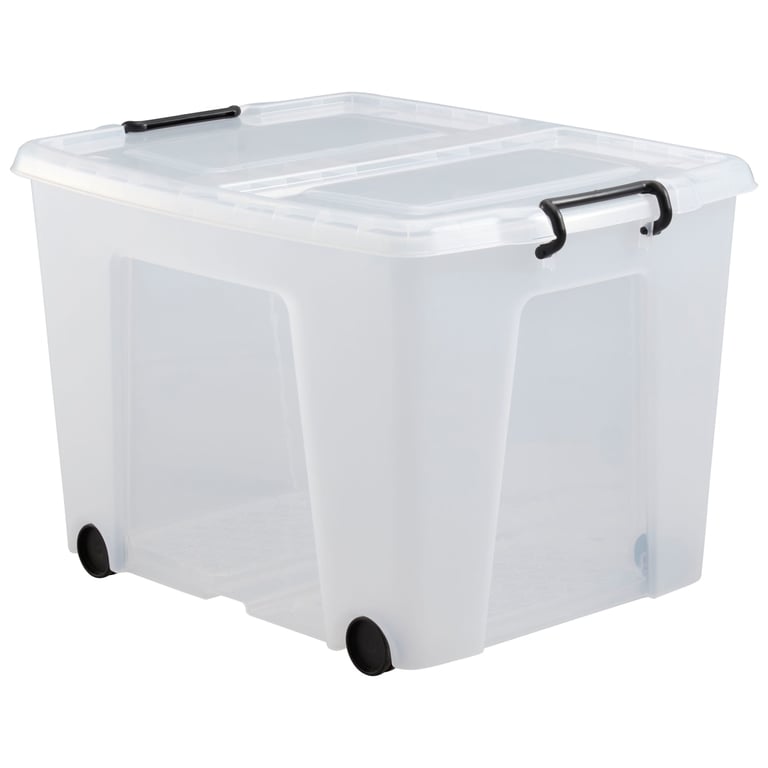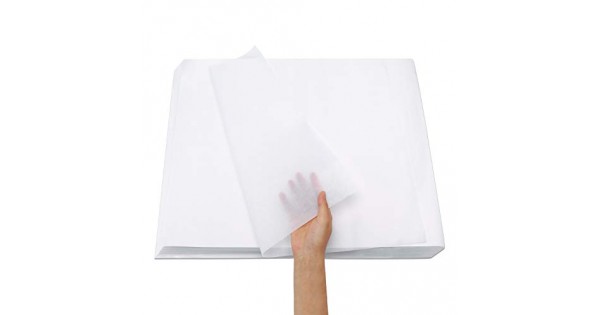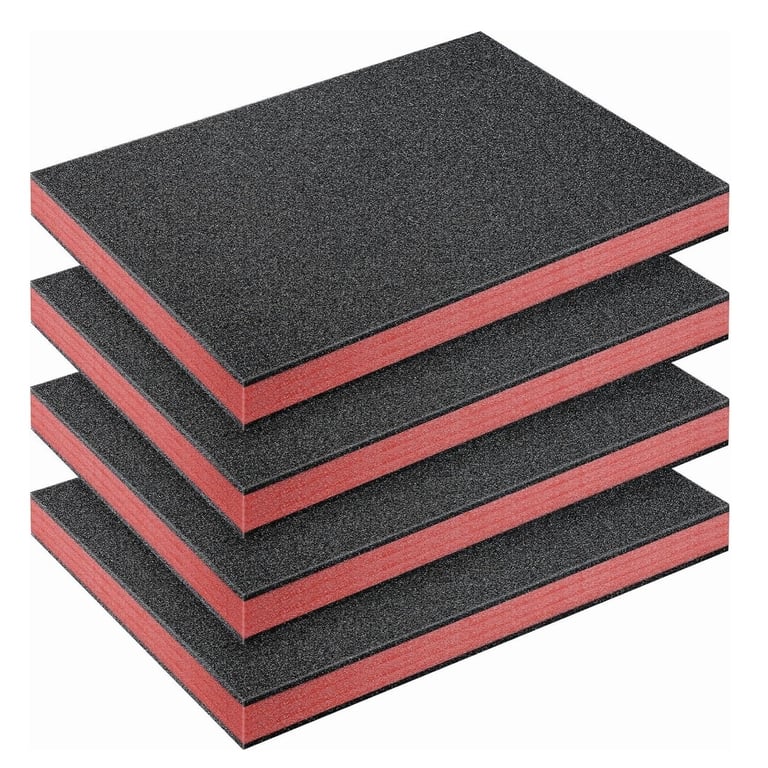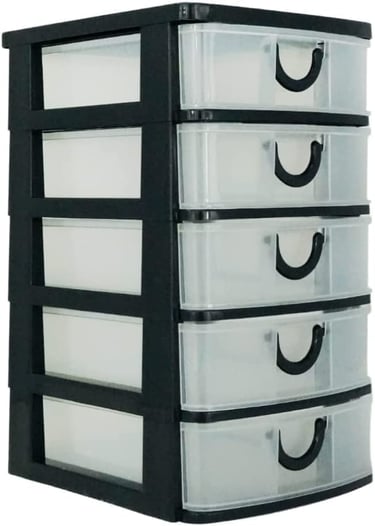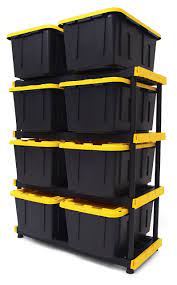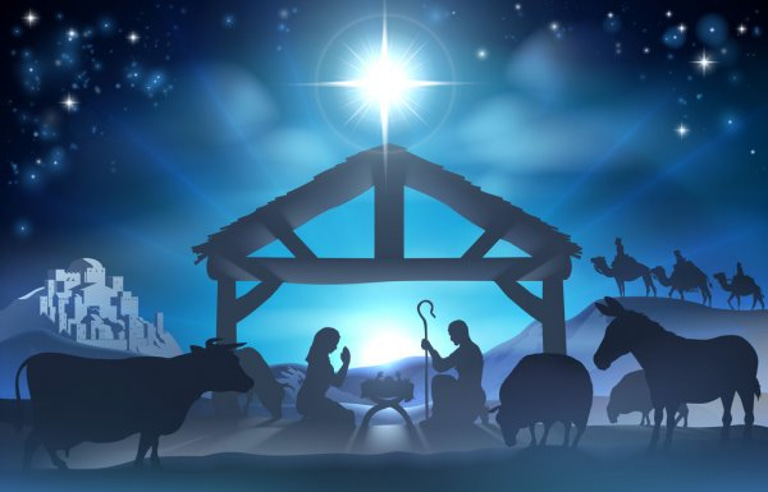Best Ways to Organize and Store Your Nativity Figures
Keep your Nativity sets safe and beautiful with expert packing and storing tips. Protect your cherished decorations year after year. Learn more now!
Grace Callahan
1/18/202519 min read
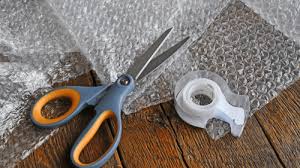

Introduction
Nativity sets are beloved decorations that capture the heart of the holiday season. These cherished displays bring joy and warmth into our homes, forming a special tradition for many families. To ensure these delicate pieces remain beautiful and intact year after year, proper storage is crucial. This guide will explore the best methods for storing Nativity sets, helping you protect fragile figures and keep your scene ready for display each holiday season. Let's get started on preserving these treasures for your family's enjoyment.
Why Proper Storage is Crucial for Nativity Sets
Nativity sets are not just decorations; they’re cherished keepsakes that carry emotional and historical significance. Whether it's the beautiful craftsmanship of the figurines or the nostalgia they evoke, a well-preserved set can become a treasured family heirloom. However, improper storage can lead to irreparable damage, robbing your set of its beauty and meaning. Why risk it when a few simple precautions can ensure your Nativity set stays in perfect condition for years to come? Let’s explore why proper storage is a game-changer for protecting your Nativity set.
Preventing Damage to Delicate Figurines
The figurines in a Nativity set can be delicate—many are made of materials like porcelain, glass, or even clay, which can easily break or chip if mishandled. With so many intricate details, these figurines are more than just decorations; they are pieces of art that deserve care and attention.
Fragility: Items like the infant Jesus or the Three Kings are often designed with fine details that can easily break off. Even minor bumps or drops can cause chips, cracks, or complete breakage. Imagine the heartbreak of unwrapping your beloved Nativity scene only to discover that one of the figurines has been damaged. Proper storage, such as bubble wrap, foam, or padded boxes, can significantly reduce the risk of damage.
Avoiding Discoloration: When improperly stored, some materials may fade or discolor over time. For example, sunlight or artificial light can cause porcelain figurines to lose their luster. Storing them in dark, cool places, like drawers or storage bins, prevents this from happening.
Protecting Against Environmental Factors
It’s not just physical mishandling that can ruin your Nativity set—environmental factors such as moisture, temperature fluctuations, and dust can take a toll on your figurines.
Moisture: A humid environment can lead to the deterioration of materials like wood or metal, causing them to warp, rust, or develop mold. I can’t help but cringe when I think of the damage that humidity could do to something as precious as a Nativity set. Ensuring that your storage area is dry and well-ventilated is essential. You might even consider using moisture-absorbing packs in storage boxes to keep things dry.
Temperature Fluctuations: Extreme temperature changes can cause materials like clay or resin to crack or warp. That’s why it's important to store your Nativity set in a stable environment—one that's neither too hot nor too cold. Keeping it in a room that remains at a steady temperature, like a closet or storage cabinet away from radiators or windows, will help prevent unnecessary damage.
Dust: Dust is a subtle yet persistent enemy when it comes to keeping Nativity sets pristine. Over time, dust can accumulate on delicate figurines, leading to discoloration and tarnishing. Even if it’s a minor issue, having to regularly clean your set can be a hassle—and if you’re not careful, you might accidentally damage the figurines in the process. Using a box or container with a secure lid can keep dust at bay.
Ensuring Longevity and Preserving Sentimental Value
A Nativity set is more than just a seasonal decoration—it can carry deep sentimental value, passed down through generations. Imagine being able to pass it down to your children or grandchildren, knowing it will still be as beautiful and meaningful as the day you first received it. Proper storage ensures that your set will last, maintaining its beauty, integrity, and emotional significance.
Longevity: When stored correctly, a Nativity set can last for decades, if not centuries. Whether it’s an heirloom passed down from your grandmother or a carefully selected new set, taking steps to protect it from environmental hazards and physical damage can help it remain in pristine condition. In some cases, specific materials may need particular care to preserve their longevity—wooden sets, for example, may require occasional polishing to maintain their finish.
Sentimental Value: The emotional connection you have with your Nativity set is irreplaceable. When you store it properly, you’re not just protecting its physical form—you’re also safeguarding the memories attached to it. If you’ve spent years setting it up during the holiday season with your family, you want to ensure that it remains in good condition, so you can continue to create lasting memories for generations to come.
Choosing the Right Storage Containers
When it comes to storing your Nativity set, the right container is everything. The storage solution you choose can determine how well your figurines are protected from dust, moisture, and temperature fluctuations. I’ve always found that the key is balancing practicality with care, ensuring that your set stays safe without compromising convenience. Let’s break down the options for both soft and hard storage and how to choose the best one for your Nativity set’s materials.
Soft Storage Options: Boxes, Bins, and Tissue Paper
Soft storage options are a great choice if you’re looking to keep your Nativity set protected without needing heavy-duty containers. These methods are affordable, and depending on the material, they can offer just the right level of protection.
Boxes: Cardboard boxes are a go-to for many collectors, and I get why—they’re inexpensive and come in all shapes and sizes. However, while they offer basic protection from dust, they don’t provide much defense against moisture or fluctuating temperatures. If you go this route, I recommend lining the inside with acid-free tissue paper or wrapping your figurines in tissue to protect them from bumps and scrapes.
Bins: Plastic bins are a step up from cardboard boxes. They’re sturdier and offer more protection, especially against humidity. While they’re not as rigid as display cases, they do provide a secure, dust-free environment for most sets. Just make sure to use bins with tight-fitting lids to prevent moisture or pests from sneaking in.
Tissue Paper: For fragile pieces, tissue paper is an absolute must. Wrapping each figurine individually in acid-free tissue paper provides a cushioned layer that absorbs shock and prevents scratches. I’ve found that this method is particularly helpful for porcelain or glass figurines, which can be prone to chips and cracks.
Hard Storage Options: Plastic Cases and Display Boxes
If you’re looking for a more robust way to store your Nativity set, hard storage options like plastic cases or display boxes are the way to go. These options offer a higher level of protection against physical damage and environmental factors, but they tend to come with a higher price tag.
Plastic Cases: These are the heavy-duty storage option, providing airtight protection against dust, moisture, and temperature fluctuations. I personally love the peace of mind they offer, especially for more valuable or antique sets. If you’re willing to invest a little more, look for cases with UV-protective properties to safeguard your figurines from sunlight damage.
Display Boxes: If you want to store your Nativity set while still showcasing it, display boxes are an elegant solution. These often come with clear plastic or glass sides, so you can see your set without having to unbox it each time. They also provide excellent protection against dust and physical contact, although they can be a bit more expensive. However, for a set that’s meant to be a family heirloom, the investment may be worthwhile.
How to Select the Right Container Based on Your Nativity Set’s Material
The type of material your Nativity set is made from plays a huge role in choosing the right storage container. Some materials are more delicate than others, requiring extra protection, while others may only need basic care. Here’s a quick guide on how to choose the best storage solution based on your set’s material:
Porcelain or Ceramic: These are delicate materials that are prone to cracking and chipping. For porcelain or ceramic sets, I recommend soft storage with plenty of cushioning—plastic bins with foam padding or individual wrapping with tissue paper work well. If you’re going with hard storage, a plastic case or display box with custom dividers will offer the best protection.
Wooden Sets: Wood is relatively durable but can be affected by changes in temperature and humidity. For wooden Nativity sets, I’d suggest airtight plastic containers or bins to prevent moisture damage. Avoid storing them in areas with drastic temperature shifts, like attics or basements. You can also add silica gel packets to help control moisture levels inside the storage container.
Resin or Plastic: Resin and plastic are less fragile than porcelain or wood, but they can still be prone to scratches and fading. For these sets, plastic bins or even simple cardboard boxes with tissue paper should suffice. Make sure the storage area is free from extreme heat, which could warp the material.
Glass: Glass figures need extra care, as they are prone to breaking with even the slightest bump. Use bubble wrap, tissue paper, or even foam inserts for each figurine, and store them in sturdy plastic bins or plastic cases. If you’re using a display box, ensure it’s well-padded and secure to prevent movement during storage.
How to Pack Your Nativity Figures
Packing your Nativity figures for storage can be a delicate process, but it’s essential for preserving their condition. Each figurine is an investment in sentiment, tradition, and craftsmanship, so taking the time to pack them carefully is totally worth it. Trust me, there’s nothing worse than discovering a cracked or chipped piece when you go to set your Nativity scene up next year. Let me walk you through step-by-step packing tips that will protect your beloved set for future use.
Step-by-Step Packing Tips for Fragile Figurines
Packing fragile figurines is all about giving them the cushion they need to survive a year of storage. Think of it like tucking in a child for the night—extra care goes a long way!
Clean and Dry: Before you start packing, make sure each figurine is clean and dry. Dust and dirt can build up over time, and moisture can cause damage during storage. Gently dust off the figurines with a soft brush or microfiber cloth, and let them air dry if they’ve been cleaned with any damp cloth.
Wrap Each Piece Individually: Every figurine should be wrapped individually to avoid any direct contact that could cause chips or scratches. I prefer to use acid-free tissue paper for this—it’s soft and won’t harm the surface of the figurines. Wrap each figure carefully, making sure it’s covered from all angles.
Place in Containers: Once wrapped, place each figurine in a container that provides cushioning. I often use small plastic bins or boxes with padded liners. If you’re packing a lot of smaller pieces, like animals or accessories, grouping them in a single box works, but make sure each item is individually cushioned.
Using Bubble Wrap, Foam, and Tissue Paper for Added Protection
While tissue paper is a fantastic option for wrapping, adding an extra layer of protection with bubble wrap, foam, or both can be a game-changer, especially for particularly delicate pieces.
Bubble Wrap: This is my go-to for any figurines made of glass, porcelain, or ceramic. The air pockets in bubble wrap provide an extra cushion that protects against shocks, bumps, and accidental drops. For maximum protection, wrap the figure in tissue paper first, then secure it with bubble wrap. Make sure the bubbles are facing outward, as this ensures the most cushioning.
Foam Inserts: If you have a lot of fragile pieces or particularly high-value figurines, foam inserts are worth considering. These inserts fit into bins or boxes and are designed to keep your figures snug, preventing any shifting that could lead to scratches or damage. Plus, they provide a great buffer against potential humidity changes or temperature fluctuations.
Tissue Paper: The simplest of all, tissue paper is fantastic for padding between figures when you’re storing them together in a larger box. It’s soft, light, and won’t damage the finish of your pieces. Wrap your figurines in tissue and then line the container with extra paper to create a cushion between each item.
Labeling and Organizing Pieces for Easy Setup Next Year
Packing your Nativity set isn’t just about protection—it’s also about making next year’s setup as easy as possible. I’ve learned the hard way how frustrating it can be to try and remember where each piece goes or figure out which figurine is which, so organization is key.
Label Each Box or Container: As you pack your figures away, make sure to label the container with the contents. A simple “Infant Jesus,” “Mary & Joseph,” or “Three Kings” label will help you quickly identify where each figurine belongs. For added clarity, I often write a brief description of the item’s condition or any special care instructions (e.g., “Handle with care—fragile porcelain”).
Use Dividers or Sections: If you’re packing a lot of smaller pieces, like animals or accessories, use dividers or small boxes within your larger container to keep everything in its place. This not only helps prevent the items from jostling around but also ensures that you don’t waste time sorting through a pile of pieces next year.
Create a Checklist: I always find it helpful to make a quick checklist of all the figures in my Nativity set. That way, when I’m unpacking next year, I can ensure that nothing’s missing. It can be a simple note on your phone or a written list included with the packing box.
PRO TIP: List where you found each Nativity set. Once you have collected dozens of sets, you will find yourself trying to remember where you got them. Make it easy for your future self and document it now!
Storing Large or Unique Nativity Sets
When it comes to storing large or unique Nativity sets, the challenges go beyond simply keeping the pieces safe. These sets often have irregular shapes, delicate features, or intricate details that need extra care. If you’re like me, you’ve probably faced the dilemma of finding a storage solution that doesn't compromise both protection and space. Fortunately, there are a few strategies to keep these larger sets organized, safe, and out of the way when not in use.
Solutions for Storing Larger Sets or Custom Displays
Larger Nativity sets, especially custom displays, often require more creative solutions than smaller, standard sets. Not only do you have to protect each individual piece, but you also need to find a way to store everything in a manner that’s easy to access but doesn't clutter up your home.
Stackable Storage Bins: For sets with multiple large pieces, stackable bins or crates can work wonders. They allow you to maximize vertical space, keeping your display organized and neatly contained. I like to use clear plastic bins for this—it helps me quickly identify what’s inside, and I can stack them to save space. If your set includes large backdrops or scenery, consider storing these pieces in custom-sized bins or creating partitions within the bin to keep everything separated.
Custom Shelving or Cabinets: For very large or custom-designed sets, shelving or cabinets with adjustable shelves can provide an elegant solution. This allows you to store your pieces while keeping them on display in a safe, dust-free environment. For example, I’ve seen people use bookshelves with tall, adjustable spaces that can accommodate larger items without overcrowding. If your set includes extra-large figurines, you might want to consider a dedicated storage cabinet with padded shelves to prevent scratches and damage.
Options for Keeping Large Pieces Safe Without Taking Up Too Much Space
Storing large pieces without taking up too much space can feel like a balancing act, but it’s definitely possible with a little creativity. There are several options for keeping your larger pieces protected without overloading your storage area.
Foam Inserts or Padding: Large figures, such as camels or kings, need sturdy protection but also benefit from not being packed too tightly. Foam inserts or custom-cut foam can create compartments within storage containers, offering a cushion around larger pieces. This method is especially helpful for items with more intricate features like flowing robes or extended arms, as it prevents the figures from shifting and getting damaged.
Under-Bed Storage: One of my favorite space-saving tricks is using under-bed storage boxes. These long, shallow bins slide easily under most beds, providing the perfect space for larger or flat pieces like backdrops or the stable structure. This option makes use of otherwise wasted space and keeps your figures out of sight but easily accessible when the time comes to set up your display.
Hanging Solutions: For extremely large or awkwardly shaped pieces, consider using hanging storage solutions like pegboards or hooks in a closet or storage room. By hanging pieces that would otherwise take up too much floor or shelf space, you free up valuable space for other items. I’ve seen people use large fabric bags with hooks for hanging heavier or bulkier items, keeping them off the ground but still safe and protected.
Creative Storage Ideas for Unusual or One-of-a-Kind Nativity Figures
If you have a truly unique or one-of-a-kind Nativity set, chances are you’ve got a few figurines that require extra attention or special storage. Whether it’s a hand-painted ceramic piece or a rare, custom-crafted figure, these items need thoughtful care to ensure their preservation.
Custom-Made Storage Containers: If you’re dealing with rare, unusual, or custom-made pieces, consider investing in custom storage solutions. For example, foam-lined wooden boxes or custom padded crates can be built to fit your figures perfectly. Not only does this provide a snug fit, but it also allows you to store these special pieces separately from your more standard figures, ensuring they’re given extra care.
Glass or Display Cabinets: For one-of-a-kind figures that you don’t want to pack away entirely, a glass-fronted display cabinet can be a beautiful solution. This keeps your pieces safe from dust, curious hands, and accidental bumps while still allowing you to admire them. Plus, it’s a way to keep the spirit of your Nativity set alive year-round. If you opt for a glass cabinet, make sure it has solid shelves and a secure door to avoid potential accidents.
Soft Pouches or Fabric Storage: For particularly delicate pieces that might not fit well in boxes, soft fabric pouches can be a great option. I’ve used padded pouches made from velvet or cotton to store figures with intricate features or delicate paintwork. These pouches protect the figurines from scratches and dust while allowing you to store multiple pieces in a compact space.
Ideal Storage Locations for Nativity Sets
Finding the perfect place to store your Nativity set is just as important as how you pack it. While we often focus on how to protect the pieces, the environment in which you store them plays a huge role in their longevity. Temperature extremes, humidity, and dust are all factors that can cause significant wear and tear on your figures. The key is to find a safe, stable environment that will keep your figures in great condition while not taking up too much space.
Where to Store Your Nativity Sets to Avoid Temperature Extremes
Temperature extremes can be the silent destroyers of your Nativity set. Too much heat can cause cracking in porcelain or dried-out paint, while cold temperatures can lead to brittleness or even breakage. Keeping your set in a stable environment with a consistent temperature is essential.
Avoid Attics and Garages: I’ve seen so many people store their Nativity sets in attics or garages because they have extra space. But these areas often experience temperature fluctuations that are just too extreme for delicate figurines. During the summer, attics can become unbearably hot, while in the winter, temperatures can drop to freezing levels. For these reasons, I highly recommend staying away from attics and garages if you want to preserve the life of your set.
Keep It Indoors: The best place to store your Nativity set is somewhere inside your home, away from the extremes. A closet or a bedroom with controlled temperatures year-round is ideal. Think about storing it in a place where the ambient temperature stays relatively stable, avoiding places that get too hot or too cold, such as near heaters or air conditioning units.
The Best Places to Store Them During the Off-Season (Closets, Basements, Attics)
When it comes to storing your Nativity set for the off-season, the best options are closets, basements, and occasionally attics—though with a few caveats. Let’s break it down.
Closets: If you have a closet that’s not too close to an exterior wall (which could fluctuate in temperature), this is often your safest bet. A closet in a bedroom or hallway offers both a stable temperature and the ability to keep your set hidden but accessible. I prefer keeping mine in a closet because it keeps the pieces protected from dust and curious hands. You can easily slide bins or boxes under hanging clothes, maximizing space without cluttering up your room.
Basements: Basements can be tricky. They’re often cool, which is great for preventing heat damage, but they also have high humidity levels, which can lead to mold or mildew. If you decide to use a basement, make sure it’s dry and well-ventilated. Consider using a dehumidifier to keep moisture levels in check, and avoid storing your set directly on the floor to prevent potential water damage.
Attics: As mentioned, attics are a bit of a gamble. If you live in a mild climate where temperature fluctuations aren’t extreme, an attic might work—just be mindful of ventilation. If the attic is not temperature-controlled, it can be a risky place to store a Nativity set. The key is to monitor the space regularly to ensure it doesn’t get too hot or cold.
Using Climate-Controlled Storage for Valuable or Fragile Sets
For those who own particularly valuable or fragile Nativity sets—whether they’re heirlooms, handmade pieces, or expensive antiques—climate-controlled storage can be a lifesaver. This option is especially helpful if you live in an area with extreme seasonal temperature swings.
The Benefits of Climate-Controlled Storage: Climate-controlled storage units maintain a stable environment, typically between 55°F and 85°F, with low humidity levels. This is a game-changer for protecting your set from the detrimental effects of moisture, heat, or cold. I’ve had friends use this option for their more fragile sets, and they swear by it. If you’re investing in a rare or expensive set, this could be the best way to guarantee its protection year-round.
Where to Find It: Many storage facilities offer climate-controlled units, and they’re generally affordable depending on your location and the size of the unit. You can choose from a small unit to store your set or rent a larger space if you have several sets or a large collection. Just make sure to choose a reputable facility with good reviews to ensure your set is in safe hands.
Tips for Organizing Multiple Nativity Sets
If you're like me, the collection of Nativity sets can quickly grow beyond what you expected, and before long, you're left wondering how to keep it all organized. With each set coming in different sizes, materials, and themes, it can be tough to manage them in a way that’s both practical and safe. Over time, I've learned that organizing your Nativity sets not only makes storing them easier but also ensures you can set them up with minimal fuss each year.
How to Organize and Categorize Your Collection
When your collection starts to grow, it's easy for pieces to get lost or mixed up. The first step in organizing multiple sets is to categorize them in a way that makes sense for you. Here are a few methods that have worked for me:
By Set: The simplest way to categorize is by the individual set. If you have multiple complete sets, storing each one separately with its own container will save you time when it’s time to display them. This method works well for those who want to keep their collections intact and neatly separated. I personally use labeled bins for each set, so I know exactly where everything is.
By Theme: Another way to organize is by the theme of each set. For example, you can group traditional sets, modern sets, or historical representations of the Nativity scene. This helps if you're trying to showcase specific types of Nativity scenes during certain seasons or events. Plus, it lets you quickly grab the set you want based on the theme you’re aiming for that year.
By Materials or Style: If your collection spans a variety of materials—ceramic, wooden, fabric, or even glass—organizing by material can prevent damage and confusion. Fragile sets, such as glass or porcelain, may require extra padding or separate bins, while sturdy wood or metal sets can go in larger containers without the risk of breaking. You might also consider organizing based on design style (rustic, contemporary, classic) if that fits your aesthetic.
Creating a Storage System for Sets Based on Themes, Sizes, or Materials
Once you’ve categorized your sets, the next step is setting up a system to store them. It’s essential to make the most of your available space, but also ensure each set stays safe and organized. Here are some ideas that have worked for me:
Themed Bins or Shelves: For those who enjoy the thematic approach, using color-coded or labeled bins for each theme is a great way to stay organized. For example, I have a bin labeled "Traditional" for my classic Nativity set and another one labeled "Modern" for my contemporary figures. For larger sets, using shelves or cabinets can help keep everything in place and make it easier to see what you have at a glance.
Stackable Storage: For space efficiency, stackable bins are a lifesaver. You can label each bin according to the set or the material, and stack them up to save floor or closet space. I recommend clear plastic bins for easy visibility, but opaque bins also work if you prefer a cleaner look. Just make sure you don't stack them too high to avoid any accidents.
Dividers or Trays for Smaller Pieces: If your sets have a lot of small figurines or delicate accessories, consider using small dividers or shallow trays inside the bins to keep things in order. This is a great way to avoid pieces from getting damaged or lost. I use fabric dividers in some of my bins for extra cushioning and to keep everything neatly separated.
Keeping Track of Missing or Damaged Pieces
Over time, it’s almost inevitable that pieces of your Nativity sets will get misplaced or suffer damage. Keeping track of these pieces can be challenging, especially if you have a large collection. But with the right system, it doesn’t have to be.
Inventory Lists: One of the best methods I've found is keeping an inventory list for each set. This can be as simple as a spreadsheet or handwritten list that details each piece in the set. I often add a note about the material, condition, and any repairs I’ve made over time. Keeping this inventory helps me know if something is missing and can also help with insurance purposes if needed.
Photo Documentation: To make sure everything is in its place, I take a photo of each set as it’s packed away. This provides a visual reference for when I’m setting it up again or searching for a missing piece. It’s also a great way to document any wear and tear over time.
Labeling Pieces: If you have smaller or intricate pieces, labeling them can save a lot of time when you need to check for missing parts. I use small, removable labels on the bottoms of pieces, which I can remove once the set is displayed. This prevents confusion and ensures that you’re putting everything back in its rightful place.
Repair and Restoration: If you notice a piece is damaged, it’s a good idea to set it aside for repair. I’ve found that it’s much easier to restore a small chip or crack while the damage is fresh, rather than waiting until the next time you set up the display. I also keep a small repair kit with glue and paint for touch-ups on the go.
Conclusion
Taking care of your Nativity sets is vital to keeping their beauty and value intact. By selecting the right storage containers, using protective packing materials, and finding a suitable storage spot, you can safeguard your cherished decorations. Follow these straightforward steps to ensure your Nativity figures are always ready to shine during the holiday season. Start today and preserve the joy these pieces bring to your home for years to come.
